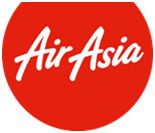
Before a product is forwarded to the development ground, it’s prototyped on paper. The development team prepares the documentation of each thing from planning to development to testing to debugging, marketing, and all. This documentation gives clarity and precision about the product to all the stakeholders and development team members. SRS and PRD are essential documents that streamline the software development life cycle to avoid ambiguities.
Here, in this blog, we will compare the two: SRS vs. PRD. The documentation is required to accomplish goals aligning the client’s Android and iOS app development requirements or any other tech implementation.
Overview of Software Requirements Document
SRS is a software requirements specification document that contains all the fundamental and exclusive content of functional and non-functional specifications. The other name is the software requirements document.
When a new idea is initiated, iOS and Android app development companies prioritize it. The manager and client come one-on-one for a detailed discussion. They will take notes and proceed after discussing the requirements, project scope, features, functionality, budget, etc. The team members can go in/out or swap the project responsibilities anytime.
Components Layout of SRS:
SRS comes in handy to manage the interruption-free, error-free track process. It’s like a speech conveying the project idea to the final development:
- It contains the approaches, methodology, and practices for software development.
- Documentation to explain the utility, features, and operational mechanisms.
- Application and use cases of the developed software.
Project managers are responsible for managing client meet-ups and deals. They collect all the client’s needs, research, and analyze essential inputs. Nevertheless, they invest immense efforts to craft a comprehensive SRS for the development team.
The Lack of project details will interrupt the development process. A Software requirements document is like a blueprint, leaving no stone unturned to manage the project workflow. Alternatively, the SRS is an abstract overview of the final product satisfying the client’s vision. It keeps everyone in a loop associated directly or indirectly with the project.
Overview of Product Requirements Document
SRS documents are prepared by focusing on ground-level implementation and execution practices. In contrast, the PRD is concentrated on truthful product requirements and specifications that will reflect on product release. It also crafts documents for other phases, including testing and release.
SRS dictates the implementation, whereas the PRD explicitly shares the purpose of the implementation. PRD and SRS are both integral parts of the software development process carried out in waterfall and agile.
You need to be very attentive during the documentation process of PRD and SRS. Neglecting any essential aspect will influence the product’s success. Thus, define the desirable things. You can include additional essential product requirements, too. Basic we are mentioning down:
Components Layout of PRD:
PRD considers the project assumptions, constraints or hurdles, and dependencies. However, many things are enveloped in the Product Requirements Document. Here we are listing them:
Objectives and Goals for Development and Release
Here, you explain the app idea, accomplishments, or desires you want to achieve.
Features
Explain the features description of what the utility is. Define the needful details aligning the product’s complexity level, feature, and scope.
UX Flow & design (markups, prototype, wireframing)
Define how the user will navigate the interface and other features. After that, move on to the actual implementation of the UX design. Don’t get into the design until you get approval on PRD.
System and Environment Requirements
Define the support for compatible OS and browsers, memory storage, processing power, and other environmental issues.
Assumptions, Constraints and Dependencies
Define the desirable user end expectations, limitations, or other functionality accessibility you want to import for proper functioning.
Before heading onto the PRD structure, one should know each business aspect and driver. How will the product be released? The aim is to set priorities to eliminate any delay in production release.
For this, the product management and marketing team collaborated to lay the business driver on paper.
- Enlist the preferable methods/ practices aligning with the scope of the release.
- Prepare a document collecting the user feedback and notes mapping each feature that will be out for the release.
- Each team member’s input and acknowledgment matters. Thus, ask everyone to share their challenges, implementation, and doubts throughout the product production and release cycle.
- Multiple reviews and feedback eliminate any type of errors. It must check whether the product complies with all the defined objectives. If there are areas for improvement, receive feedback from the production team and share it with stakeholders and the technical analyst team. You can have a one-on-one discussion with all the team members involved, like writers, UI/UX designers, and QA analysts, to get things verified.
After the end of the PRD review, the developers will clearly understand what will turn out for the users in the marketplace. Will it be worth it for the business to shape its endeavors?
How does an SRS differ from a PRD?
You may have understood the role of any SRS and PRD in software development. We are listing the key points to get a clear idea of these two components.
Focus
The software requirements document concludes with all the technical aspects and system-related info. It summarizes the functional and non-functional elements/ features, behavior, performance, and security.
PRD concludes the objective and vision of the product development from the business and user perspective. It’s about UI/ UX and other essential features to get optimum results from the product.
Audience
All the members who take part in designing and building the product get access to this SRS document for technical understanding.
The product requirements document is accessible to all the stakeholders, designers, developers’ teams, scrum masters, and marketing teams. Anyone with little or no understanding of the product can also get product insights. Everyone can understand the purpose of shaping and implementing the features of this product.
Scope
It’s high-quality documentation with the product layout, wireframing, front-end and back-end technical intricacies, and all the methods. It contains the initial user requirements, market insights, and business objectives.
Time of Creation:
It’s a pitch for tech development from the initial stage. Before the development occurs or when the discussion starts with the client.
Example:
An SRS concludes the implementation of all the security protocols, methods, database connectivity, API, and similar features.
The PRD includes the details of all the features, user persona, design, registration screen, and interactions per the client’s needs.
Conclusion:
A software developer should always have documentation of product requirements for successful UI design and functionality development. It delivers a clear understanding of the project scope, outcome, and market release plan.
In the lack of proper documentation, the project may lose some functionality and fail to achieve the goal of aligning with the user’s expectations. Thus, the iOS app development company takes it as a crucial task.
If you need support or consultation for the Android and iOS app development project. We are open; feel free to reach out.
FAQs:
Define Software requirements document.
It’s like a wireframe demonstrating the lifecycle and plans to match the system perspective. From features to behavior, the SRS reflects the procedure for successful implementation considering stakeholders’ wants.
What is the role of PRD, SRD, and FRD in a software development lifecycle?
PRD demonstrates the user perspective and requirements. FRD resolves doubts and develops the understanding of the user perspective utilizing different use cases, operations, and activities per the system perspectives. SRD uncovers the manageable modules to understand and implement the functionality.
Why did the Software development team prepare the project requirement document?
A project takes effort, time, and financial support. If requirements still need to be cleared by the product development team, how can they crack the milestones and deliver the desirable product? It manages to resolve the doubts and additional load of time and money.




Recent Comments